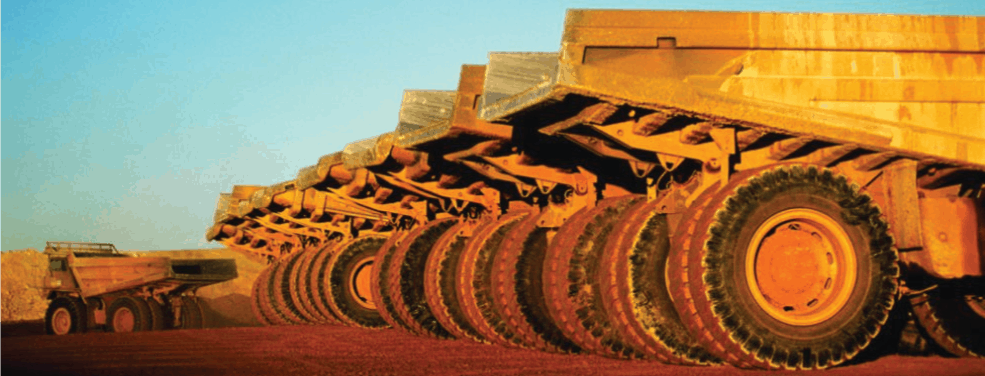Australia is a key industrial hub in Asia-Pacific, including heavy industries such as mining and oil and gas. Safety is critical in these environments, so we caught up with Joe Hischar, Managing Director of leading Australian industrial safety solutions business Teksal Safety, to explore the role of engineered controls in a best practice Drops prevention programme, and why awareness of Drops prevention in Australia should go beyond its traditional stronghold sectors.
Hi Joe! Thanks for speaking to us today. To start us off, could you give us an insight into the current state of Drops awareness – and prevention – in the Australian market?
We’re certainly seeing increased awareness, particularly in mining. In the early days, we saw crude, makeshift solutions being used in that sector, but over the years the standard of solutions has matured. Operators recognise the importance of using robust solutions that have been designed and tested for Drops prevention.
Does the Australian market face specific challenges in adopting best practice Drops prevention solutions?
Awareness will always be a key focus. And, embedding best practice and educating leaders about comprehensive Drops prevention programmes remains as crucial as ever.
Despite today’s connected world, in Australia, remote environments can be challenging. Major hazardous facilities such as mine sites are often far from high-density centres – potentially thousands of kilometres away. To maintain high safety standards in these remote project sites, it ultimately comes down to creating and embedding a strong, consistent safety culture.
What are your top three recommendations for effective Drops prevention in Australia?
Follow the hierarchy of safety controls and engineer out the risk as a priority. Dropsafe is a good example of this. You could put a sign up on a walkway that warns personnel not to drop objects over the deck. But this is an administrative control. It is low on the hierarchy, and ultimately, Drops could still occur. However, a physical barrier prevents this.
Secondly, continue to build awareness of Drops risks and Drops prevention solutions. Education is key in all industries – even those more established. The risks evolve, the solutions evolve, and operators must keep pace.
Finally, we would challenge the industry to innovate. Don’t settle for the status quo, search for the best solutions, and improve the situation.
How do you view Teksal Safety’s role in keeping Australian workers safe?
Our goal is to protect people, plant and process. Safety culture often emphasises administrative controls and things like PPE. While these play a key role within a wider HSE programme, we focus on engineered controls to mitigate risk at a high level.
We do have solutions that tackle administrative issues that capture residual risk. But our main aim is to mitigate the risks further up the chain.
What drove you to set up Teksal Safety?
The Teksal story starts with my experience in the US Navy Nuclear Power Programme. I’d worked in instrumentation and control, power generation, process plant operations and training, where nuclear safety regulations and culture are among the most stringent. It was an incredible experience and it influenced me both technically, and as a business leader.
I recognised an opportunity for a company to bring that unique experience, safety-focused technical solutions, and high-level safety culture to the Australian market, which culminated in me launching Teksal Safety in 2002. Bringing together and developing my long-term business relationships with manufacturers and others, Teksal demonstrates the value of building healthy, long-term partnerships.
Which industries does Teksal operate in, and why?
Hazards exist in all workplaces, to a certain extent. We work in a diverse range of industries, from industrial, food and beverages, utilities, and water treatment to offshore energy and power generation.
We initially gravitated towards oil and gas as it is an industry that, like the nuclear sector, demands strict, high-level safety controls, and therefore had significant awareness of key risks such as Drops. The oil and gas sector was the benchmark for operational and process safety in Australia.
But this same need to protect personnel and equipment naturally exists in other heavy industries. Mining, for example, has significantly improved its Drops prevention culture over the past 20 years. There are important lessons for other industries to learn from the O&G experience, including power generation and manufacturing.
How did the Dropsafe partnership come about?
We were introduced through mutual business partners at an event where Dropsafe was exhibiting. I’d long been aware of Dropsafe because of the strength of its solutions. I was excited to be introduced to the company, because we identified common goals and a clear synergy between our brands. It was the right time and the right fit.
Dropsafe’s product quality – including the testing and documentation – is second to none. It is a market leader, yet continues to innovate. As a partner, its professionalism is exceptional, and the drive to spread the Drops message to the market is clearly communicated.
We’re proud to be associated with the brand. It’s always good to have a flagship brand in your product suite, and that’s how we feel about our partnership with Dropsafe.
Thanks for your time, Joe – we look forward to hearing more from Teksal Safety in future.
To find out more about Teksal Safety and its products, please visit this link. For more information about Drops prevention, Dropsafe and its products, feel free to get in touch at info@dropsafe.com
